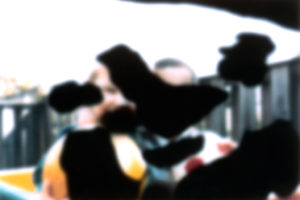 Diabetes is a disease that prevents the body from making or using insulin to break down sugar in the bloodstream. The most serious eye problem associated with diabetes is diabetic retinopathy. Diabetic retinopathy occurs when there is a weakening or swelling of the tiny blood vessels in the retina of your eye, resulting in blood leakage, the growth of new blood vessels and other changes. If diabetic retinopathy is left untreated, blindness can result. In a routine eye examination, your optometrist can diagnose potential vision threatening changes in your eye that may be able to be treated to prevent blindness. However, once damage has occurred, the effects are usually permanent.
Diabetes is a disease that prevents the body from making or using insulin to break down sugar in the bloodstream. The most serious eye problem associated with diabetes is diabetic retinopathy. Diabetic retinopathy occurs when there is a weakening or swelling of the tiny blood vessels in the retina of your eye, resulting in blood leakage, the growth of new blood vessels and other changes. If diabetic retinopathy is left untreated, blindness can result. In a routine eye examination, your optometrist can diagnose potential vision threatening changes in your eye that may be able to be treated to prevent blindness. However, once damage has occurred, the effects are usually permanent.
Background diabetic retinopathy is an early stage of diabetic retinopathy. It can lead to more advanced sight-threatening stages and must sometimes be treated with a laser.
Proliferative diabetic retinopathy causes abnormal blood vessels to grow inside the eye in a response to diabetes. These new blood vessels, called neovascularization, are very fragile and can cause a great deal of havoc through both scarring and bleeding inside the eye. The abnormal blood vessels may also promote the formation of scar tissue causing a danger of detached retina. Abnormal blood vessels may also grow on the iris (the colored part of the eye), causing a form of glaucoma. Proliferative diabetic retinopathy is generally treated with laser. In more advanced cases, surgery inside the eye maybe necessary.
Early detection of diabetic retinopathy is crucial. Several factors that increase the risk of developing diabetic retinopathy include poor control of diabetes, smoking, high blood pressure and pregnancy.
Studies have shown that careful attention to maintaining good blood sugars, regular exercise and attention to diet can make a significant difference. Good blood pressure control is also important. Since, in most cases, early stage background diabetic retinopathy does not present symptoms, careful monitoring and treatment can be initiated before sight is affected.
